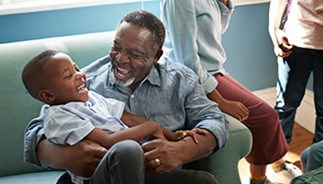12 Signs of Arthritis in Young People
Arthritis is a common condition that affects the joints, causing inflammation, swelling, and joint pain.
Uncomfortable and often destabilising, living with this condition can make daily tasks difficult, such as exercising, walking long distances, writing, and picking up items.
According to Versus Arthritis, over 10 million people in the UK have arthritis, with many being over the age of 30 – but did you know arthritis can impact young people too?
In this article, we’ll explore the most common kinds of arthritis, at what age you may develop arthritis, and how to help manage the symptoms at home.
Can young people get arthritis?
While it may be more common in adults and the elderly, it’s possible for people of any age to get arthritis.
Typically, symptoms start to develop in adults between 30 and 50 years old. However, you can get arthritis in your 20s or even younger, depending on what type of arthritis is present.
There are different kinds of arthritis, but juvenile idiopathic arthritis (JIA) is the most common form of arthritis in young adults. JIA can be diagnosed in babies as early as 6 months, or later on in teens around the age of 16.
Symptoms of JIA are often similar to that of arthritis found in adults. However, while most people who get arthritis in their later years will have it for a lifetime, it’s possible for children to grow out of JIA.
What causes arthritis in young people?
The causes of arthritis in young adults can differ depending on what form of arthritis they have.
Though people generally refer to all of them as arthritis, some of the more common specific types of the condition include:
Rheumatoid arthritis.
Osteoarthritis, all often referred to as arthritis.
Both JIA and rheumatoid arthritis are caused by the immune system attacking the body’s cells and tissues around the joints. As a result, this causes swelling and damage to the joint, bones, and cartilage.
Osteoarthritis is caused by excessive wear and tear to cartilage around the joint. As the cartilage becomes damaged, it stops being able to prevent friction between the bones, causing them to grind against each other with movement.
Other causes of arthritis include injury to the joint, a genetic defect passed down from family members, overuse, or the result of a viral infection. However, certain forms of arthritis can occur with no cause, which is known as idiopathic arthritis.
12 signs of arthritis in young people
Knowing the symptoms of arthritis in young adults can help get a diagnosis and appropriate treatment and support.
Signs of arthritis can differ from person to person, but there are some common symptoms to be aware of with arthritis in young adults.
- Stiff joints.
- Swollen joints.
- Weak muscles.
- Joint pain.
- Muscle wasting.
- Limping.
- Losing sleep.
- Weight loss.
- Crawling instead of walking (in the case of toddlers).
- Sitting more often than usual.
- Not using their arms as much when playing or struggling with physical activity like playing football.
- Loss of interest in previously enjoyed physical activities.
While young adults can more often talk about their symptoms, younger children experiencing signs of arthritis may not be able to vocalise their discomfort. As such, it’s important to look out for any signs of discomfort in a child, such as excessive crying, pained facial expressions, or loss of appetite.
If you’re concerned about a child with signs of arthritis, it’s best to speak to your GP as soon as possible. They’ll be able to help with a diagnosis, as well as the best treatment for the form of arthritis they may have.
3 ways to manage symptoms of arthritis in young people
While arthritis can’t be cured, there are ways to manage the symptoms to help keep discomfort and pain to a minimum.
You can always speak to a care provider about symptoms if you’re concerned about excessive pain, discomfort, or if you’re struggling to go about your daily activities. They’ll be able to best advise the right course of action.
To help limit the daily impact of arthritis at home, let’s explore three ways to manage symptoms of arthritis in young adults:
1. Healthy diet
Excess weight on the joints can worsen the symptoms of arthritis. As such, it’s best to follow a healthy and balanced diet to help reduce the pressure on the joints.
For example, try eating more fish, such as salmon, herring, and anchovies, and lean meats like chicken. Oily fish is not only good for general health, but the omega-3 they contain can help reduce joint inflammation, while the protein in chicken supports the rebuild of muscle and bones.
To make fish easier for younger children to eat, you can try blending the likes of anchovies into a pasta sauce or soup. Alternatively, speak to your GP about available supplements if you’re finding it tricky to include fish into your child’s diet.
Fruit and vegetables are also essential in any healthy diet, but for arthritis they can help keep your joints healthy too. Try to eat more citrus fruits, like orange or even kiwis, as the vitamin C they contain may help boost collagen production to support healthy cartilage in and around the joints.
For vegetables, the anti-inflammatory effects of vitamin K in the likes of broccoli, spinach, and kale can help reduce discomfort. Again, if you’re having difficulties getting your child to eat vegetables, try chopping them up really small or blending them into a sauce.
2. Regular exercise
While exercise with arthritis can feel difficult, it’s important to regularly move the affected joint as this can help minimise the long-term pain.
More regular activities such as swimming, walking, or riding a bike can help stretch the muscles to increase their strength. Over time, this can make movement that bit easier. Try suggesting your child joins a sports club to make exercise more fun and sociable for them.
There are different low impact exercises to follow home as well, depending on the form of arthritis the child has. Just remember, it’s always best to warm up before exercising, and stop the movement if there’s excessive pain or discomfort.
You can also encourage your child to include the following exercises into their daily routine to help soothe any pain:
Exercise for arthritis in the hands
The Arthritis Foundation recommend making gentle fists to soothe arthritis in the hands or knuckles. To try this, follow these steps:
- Stretch out the fingers, keeping them straight, with the palm facing down.
- Making sure to not squeeze too tightly, gently make a fist shape, keeping the thumb on the outside.
- Open the hand back up, stretching the fingers out straight again. Repeat 10 times, or as many times as possible, before switching to the other hand.
Exercise for arthritis in the knees
You can try a ‘lying knee bend’ to soothe signs of arthritis in the knee. Just follow these steps from the NHS:
- Start by lying on the floor on a yoga mat to protect your back.
- Straighten both knees, before gently sliding the painful knee up, keeping the feet on the floor.
- Once the knee is as high up as is comfortable, hold the position for 10 seconds, before gently lowering it. Repeat 10 times or as much as is comfortable.
3. Good night’s sleep
Getting a full, restful night’s sleep has a myriad of health benefits - and it’s no different when it comes to soothing signs of arthritis.
Poor sleep can lead to more achy and stiff joints come morning time, and you may find it impacts your child’s mental health as well.
While sleeping with arthritis can be tricky at times, especially if you’re experiencing a flare up of symptoms, you can make it easier by improving your sleep hygiene. You can start to do this by introducing a regular sleep schedule, limiting your time on electronic devices (stopping at least an hour before sleep), and not drinking too much caffeine after midday.
It’s important to note that most fizzy drinks contain a level of caffeine as well, so it’s best to limit the intake of these as well.
How can Benenden Health help?
As a member of Benenden Health, you could, from day one, you’ll be able to access a 24/7 GP Helpline, where you can call to book a telephone appointment or video consultation with a UK-based GP at a time that suits you. Plus, a range of health and wellbeing resources via the Benenden Health App and many more affordable healthcare services.
Alternatively, if you’re looking for more ways to care for your joints or what foods to eat to improve sleep, head over to our Be Healthy hub.
Medically reviewed by Dr Cheryl Lythgoe in February 2025.


